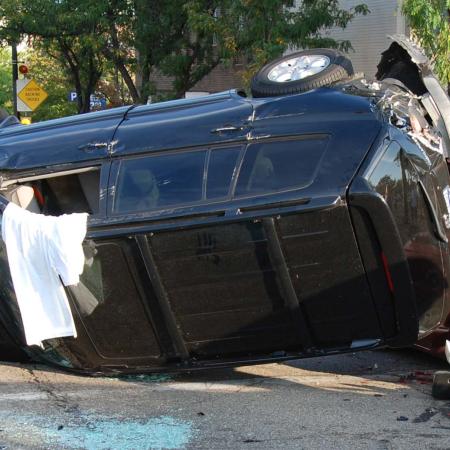The latest three-year analysis released by AMATS shows that fatal motor vehicle crashes surged in the Greater Akron area during 2020 when compared to 2018.
The new report is based on AMATS’ analysis of more than 51,000 motor vehicle, bicycle and pedestrian-related crash records for the area’s roadway sections and intersections obtained from the Ohio Department of Transportation (ODOT). For the 2018-2020 Crash Report, the agency identified 160 high-crash roadway sections and 202 high-crash intersections in the region.
In 2018, the Greater Akron area recorded 35 motor vehicle crash fatalities. (This total represents the nadir for fatalities over a 13-year span beginning in 2008.) After posting an increase to 44 fatalities in 2019, fatalities surged by 97 percent to 69 fatalities when compared to 2018.
AMATS Transportation Improvement Program Coordinator David Pulay says that the agency can’t offer clearcut explanations for this troubling increase, only speculation as to its cause. “It is possible that less traffic during the lockdown led to higher speeds and more fatal crashes. Some drivers mistakenly believed – and many may still believe – that they can drive faster or more recklessly with no consequences,” Pulay observes.
Surprisingly, the agency found that this recent increase in fatalities occurred during a period of significant declines in regional daily traffic, vehicle crashes, and crash-related injuries. Pulay notes that these declines may seem contradictory initially when compared to the data regarding fatalities. However, these declines may be attributable to a combination of COVID-19 restrictions, various area safety improvement projects, and vehicle safety advancements by manufacturers.
Between 2018 and 2020, the number of thousands of daily vehicle miles traveled on Greater Akron area roadways fell from 20,087 to 17,463, a decrease of 2,624 miles travelled or 13 percent. Much of this decrease – 12.9 percent – occurred between 2019 and 2020 most likely due to the COVID-19 lockdown. Coinciding with this drop in daily traffic, the number of crashes in the region also decreased, from 18,739 in 2018 to 14,965 in 2020, a decline of 20.1 percent.
Like the decrease in miles traveled, most of the decline in crashes occurred between 2019 and 2020, with 17,774 crashes in 2019 and 14,965 crashes in 2020, a drop of nearly 15.8 percent. Crashes resulting in injuries also decreased significantly, from 4,262 in 2018 to 3,503 in 2020, with the sharpest decline – 13.9 percent – occurring between 2019 and 2020.
As part of its mission as the Greater Akron area’s metropolitan planning organization, AMATS also tracks bicycle and pedestrian-related crashes.
The agency found that, out of the 218 bicycle-related crashes that occurred between 2018 and 2020, 159 or 73 percent resulted in an injury and eight in a fatality. The numbers of bicycle-related crashes and bicycle crashes with injuries posted declines between 2018 and 2020. Bicycle-related crashes fell from 82 in 2018 to 57 in 2020, a drop-off of about 30.5 percent. Bicycle crashes with injuries dropped from 61 in 2018 to 43 in 2020, a decline of 29.5 percent. In contrast to the totals for motor vehicles, bicycle-related crashes with fatalities posted a sharp decrease from six in 2019 to one in 2020.
There were 413 pedestrian-related crashes between 2018 and 2020 with 340 or 82 percent resulting in an injury and 23 in a fatality. Pedestrians accounted for over 16 percent of all area crash-related fatalities that occurred between 2018 and 2020.
High-crash locations identified in the report may be used by communities as a starting point when seeking federal Highway Safety Program funds through ODOT for safety improvement projects.

